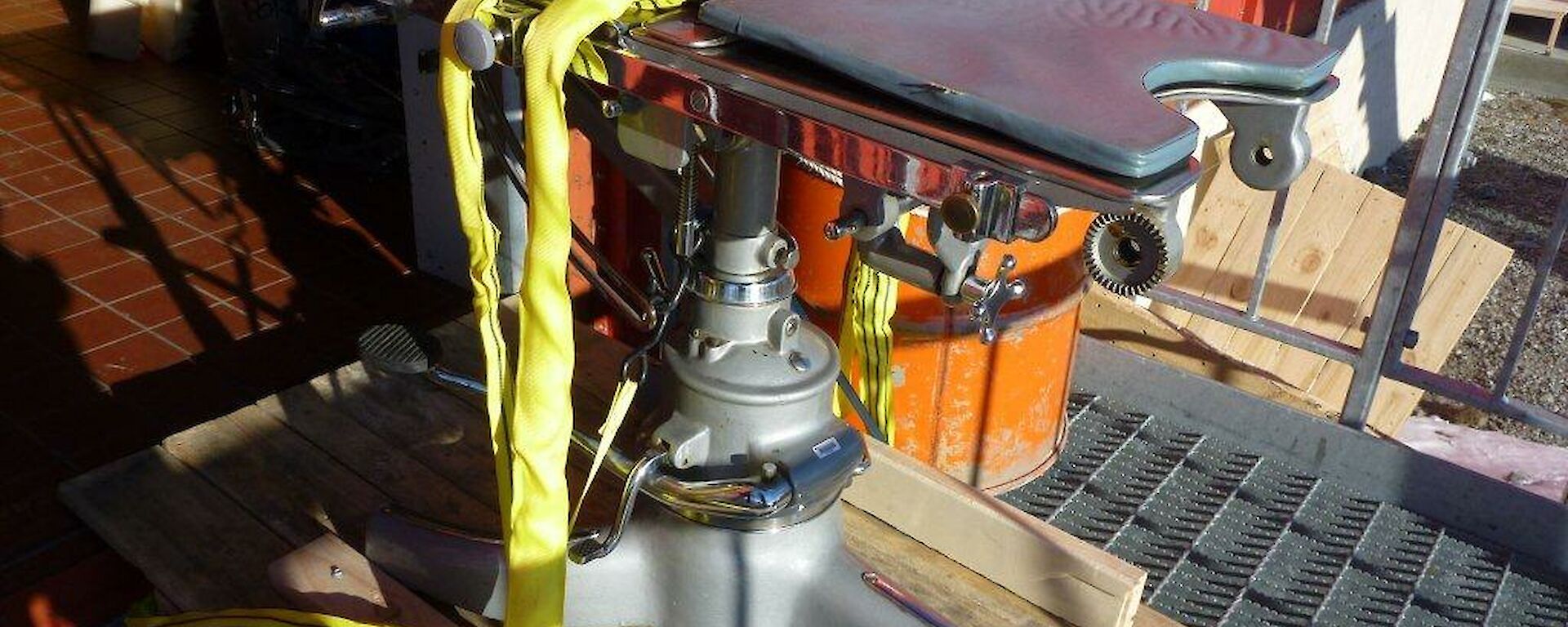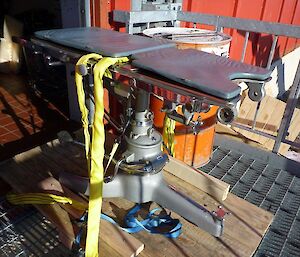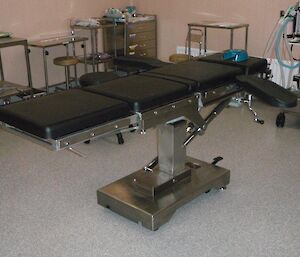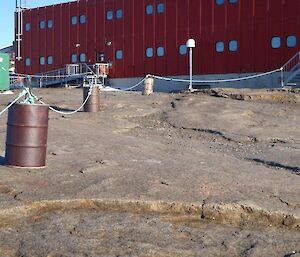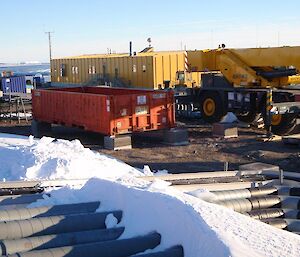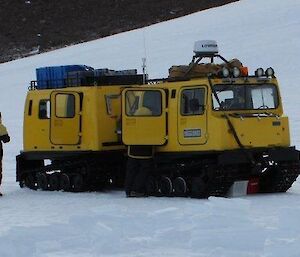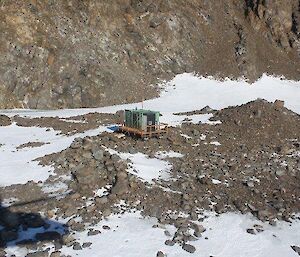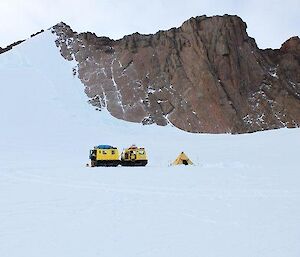I am Malcolm Arnold, the physician on station. This is my third winter at Mawson and my eighth voyage to Antarctica in total, half with the Australian and half with the United States program. Despite all my previous exposure, this continent, and this station in particular, never fail to delight me.
Nothing very dramatic has been happening this past week from the medical standpoint. The immediate weeks after resupply are always a busy time, packing medical items away, discarding expired medicines and installing new equipment. After many years service our antique though functional operating table was finally replaced with a brand spanking new modern one (photo below). Such tables are massively heavy and it took Ian Petty, Chris George, Pete Hargreaves, Wayne Scandrett, Rob Kiil and the JCB to do the job. This complements a fully functional operating theatre much as you would see back home in Australia.
On Thursday 15th March, Mel Fitzpatrick, our Field Training Officer, led a group of 4 first time people (Bron, Michael, Darren, and of course Mel) up onto the plateau for 3 1/2 days of field training. This followed the already thorough initial training back at AAD head office, with exposure to the real thing, and the ever present harsh conditions and dangers in Antarctica — as well as its beauty. Successful completion of this training is a pre-condition for later recreational trips. The four stayed in the Rumdoodle field hut, then used both tent and bivouac bags in camping in the Central Masson range. There they met −15 degree Celsius temperatures and an unpleasant 40 knot wind. All survived and look invigorated from the experience.
One of the unique realities of living at Mawson is dealing with the constant and sometimes hazardous wind. Winds on Station often reach 70 knots during blizzards and may on occasion top 100. While these wind speeds are a real danger to outside movement, some travel between buildings may still be necessary at the lower wind speeds. To make the transfer to other buildings safer, ropes under tension at about waist height (“blizz lines”) are put up along the usual travel paths. We use stiff hawser-type ropes which give excellent hand grip, not the smooth stretchy variety used in climbing. When visibility is extremely low from blowing snow during blizzards, these truly become a lifeline. They are fixed at each end to buildings, or to used 200 litre fuel drums, filled with either concrete or very heavy rocks. Each traveler calls in by radio on leaving one building and on arriving at the destination, as well as giving a likely time they will be there. While blizzards can occur at any season here they are much more frequent in winter, and before winter starts in earnest, all these lines need to be inspected for wear, tensioned, and some ropes replaced and reconfigured. Some ropes need to allow vehicle passage and are made quickly detachable with carabiners or quick links, so they can be easily dropped to the ground then reconnected. This past weekend Ian Petty and I spent time doing this maintenance.
With a lull in the weather on Tuesday 20th, Ian Petty, Wayne Scandrett and Chris George commenced construction of the new ARPANSA building which will consist of prefabricated containers lowered on to pre-existing concrete footings. Initially this involved them trial checking the dimensions and fit of the footing attachments with a half-height container before lowering the final containers into place.

